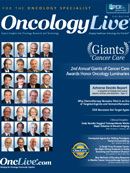New Methods of Boosting Response to Bladder Cancer Immunotherapy Explored
Although bacillus Calmette-Guérin (BCG) therapy has significantly improved outcomes for patients with non–muscle invasive bladder cancer since its introduction nearly 40 years ago, there is a pressing need to enhance responses to BCG and to distinguish which patients would respond to treatment early on in the course of therapy.
Robert Svatek, MD, MSCI
Assistant Professor, Urology
Cancer Therapy & Research Center
The University of Texas Health Science
Center at San Antonio
Although bacillus Calmette-Guérin (BCG) therapy has significantly improved outcomes for patients with non—muscle invasive bladder cancer since its introduction nearly 40 years ago, there is a pressing need to enhance responses to BCG and to distinguish which patients would respond to treatment early on in the course of therapy. As a result, researchers at the Cancer Therapy & Research Center (CTRC) are exploring fresh strategies to boost the efficacy of the existing therapy.
BCG is the gold-standard treatment of non—muscle invasive bladder cancer, one of two separate pathways along which the malignancy develops. Most patients (75%) will present with non–muscle invasive disease (formerly called “superficial”), while the remainder are diagnosed with muscle-invasive disease. Generally, patients with muscle-invasive bladder cancer require bladder removal, while those with non–muscle invasive disease can preserve their bladder.
Yet, even when tumors are completely removed, patients with non—muscle invasive bladder cancer have a high rate of disease recurrence (up to 60%) and thus require frequent and long-term endoscopic evaluations. In fact, because of the high recurrence rate, bladder cancer has been labeled the most expensive cancer per patient to manage.1
BCG, which is instilled directly into the bladder through a urethral catheter, was one of the first FDA-approved immunologic therapies and remains one of the most effective—it decreases recurrence rates by up to 50%. Although BCG is highly effective at decreasing bladder tumor recurrence, response rates are variable, and failure to respond to BCG is life threatening and usually requires prompt bladder removal.
Mouse Model Offers Clues
Recent data identified an exciting and simple method for improving the response to BCG treatment.
In an experimental murine model of bladder cancer, vaccination with BCG injected subcutaneously 21 days prior to intravesical BCG therapy could “prime” the immune system and boost immunotherapy response. As a result of existing BCG-specific immunity, 100% survival was achieved in an orthotopic mouse bladder cancer model, as compared with a modest delay in tumor growth and mortality in >60% of mice that received intravesical BCG therapy alone.2
Notably, this approach resulted in the rapid recruitment of T cells to the bladder, accelerating immune infiltration by at least two weeks.2 These results were supported by a retrospective analysis of patient data, which demonstrated that European patients with previous exposure to BCG and persisting immune memory (as assessed by a positive purified protein derivative [PPD] test) responded better to intravesical BCG therapy as compared with those who became immunosenescent.2
CTRC Leads Transatlantic Research
Based on these findings, a simple strategy of giving a BCG vaccine underneath the skin to boost the immune system and, as a result, improve responses to intravesical BCG, was proposed for clinical trial development. SWOG, the National Cancer Institute-sponsored research collaborative formerly known as the Southwest Oncology Group, recently endorsed a study that will seek to recruit 400 patients with non—muscle invasive bladder cancer.
CTRC investigators are leading a transatlantic research approach in which the BCG vaccine administration strategy will be evaluated in two clinical trials. Because the vast majority of persons in the United States have never received a BCG vaccine, they are uniquely different from the European population, who already received a BCG vaccine during infancy or childhood. Thus, this strategy will be tested in both populations through two different studies: PRIME (US) and BOOST (Europe), representing “priming” versus “boosting” of the immune response toward BCG.
The US PRIME trial is expected to start enrollment in 2015 but right now at CTRC, the strategy of priming patients with BCG vaccine has started. Two patients have undergone priming and we expect results of the immune responses in a pilot study to be available in one year.
New Evaluation Tool
The trial will also allow the development of a tool to distinguish BCG responders from nonresponders by measuring the patient’s systemic immune response to BCG. There is compelling evidence that failure to elicit a systemic immune response from BCG instilled into the bladder will predict treatment failure.1 However, a reliable ex vivo strategy to assess systemic immune response toward BCG has not been developed.
QuantiFERON-TB Gold In-Tube (QFT-G) is a commercially available blood test that is widely used as an aid in diagnosing Mycobacterium tuberculosis infection. It is based on an in vitro measurement of the immune response to a specific cocktail of M tuberculosis proteins.
In the trial, we will validate a modification of this test utilizing live BCG (Figure), which will enable ex vivo monitoring of systemic immune responses prior to and during BCG therapy and identify BCG non-responders.
Figure. TruCulture medical device
The TruCulture tubes can be preloaded with BCG. Tubes are maintained at —20oC until time of use. Blood is introduced via a standard butterfly collection device and a graded stopper ensures a maximum of 1 mL blood is loaded into the tube. After breaking away the plunger, the device is transformed into a culture device and may be incubated at 37oC for the desired time of stimulation. Following immune stimulation, cytokine assay can be performed to measure BCG-specific responses.
References
- Botteman MF, Pashos CL, Redaelli A, Laskin B, Hauser R. The health economics of bladder cancer: a comprehensive review of the published literature. Pharmacoeconomics. 2003;21(18):1315-1330.
- Biot C, Rentsch CA, Gsponer JR, et al. Preexisting BCG-specific T cells improve intravesical immunotherapy for bladder cancer. Sci Transl Med. 2012;4(137):137ra172.




